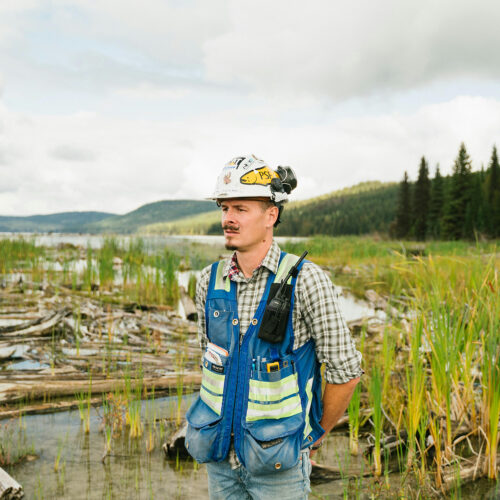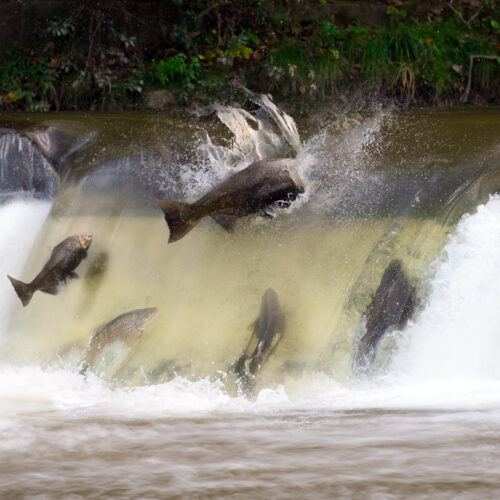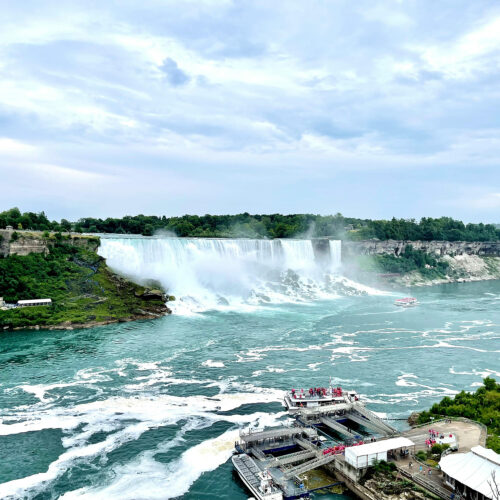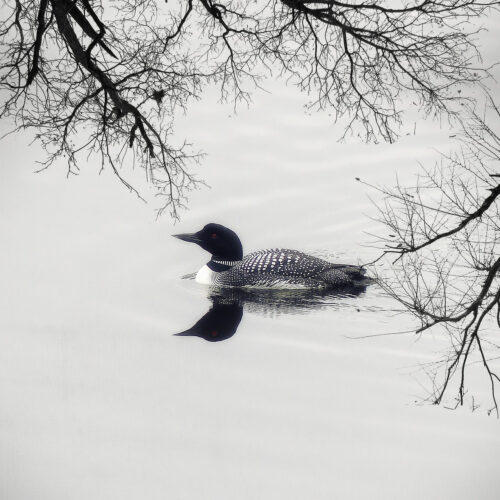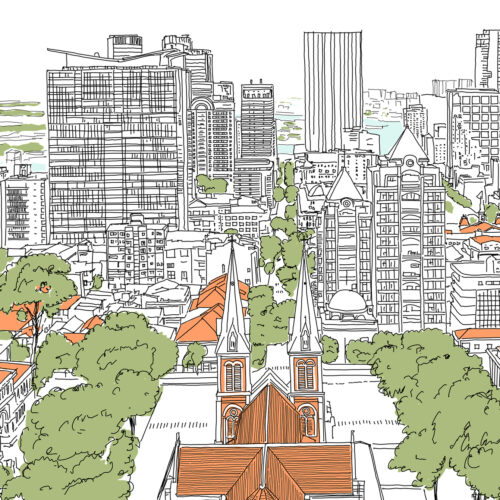Scheduled
Sessions
Expand All +
Day 1
Day 2
 09:40 - 10:10
09:40 - 10:101(A) - Innovations In Field Studies for EAs / IA – With Advancing Technology Are We Up to The Challenge?
By Kimberly Laframboise HDRAs legislative amendments continue, including the Fisheries Act, the Conservation Authorities Act, and Migratory Birds Convention Act, practitioners modernize to meet new requirements. This presentation will explore new innovations in field studies (such as Environmental DNA (eDNA)), and how these can benefit the EA/IA process, and discuss how to strike the correct balance of ensuring robust, high-quality, and meaningful IA/EAs.Session 1
 10:10 - 10:25
10:10 - 10:251(B) - New Nuclear Project Impact Assessment in Canada: Navigating First-of-a-Kind Projects in an Uncertain Regulatory Landscape
By Dr. Cole Atlin Independent IA Practitioner , Kieran Potter Calian NuclearAs new nuclear development proposals emerge, impact assessment for nuclear projects have both opportunities and challenges in order to integrate the requirements, where applicable, of the Impact Assessment Act, and the Canadian Nuclear Safety Commission licensing requirements. Case studies from across Canada will focus on technical challenges related to greenfield nuclear development.Session 1- 10:25 - 10:45
Break & Networking - Day 1 (1/2)
 10:45 - 11:00
10:45 - 11:001(C) - Impacts of Today’s Decisions in an Uncertain Tomorrow: A Review of Adaptation in the Mining Sector
By Trennon Wint Student, University of GuelphFew studies have assessed efficacy of climate adaptation in mine closure plans. This presentation would highlight best practices in the Canadian context on the adaptive response to climate change during closure and elucidate climate risks associated with post-closure mine sites. * Student Bursary WinnerSession 1 11:00 - 11:20
11:00 - 11:201(D) - Exploring the Landscape of Post-Environmental Assessment Support
By David Kielstra Stantec Consulting Ltd.Following the environmental assessment (EA), EA commitments are transferred to designers, permitting conditions, and then subsequently to a contractor; and there is a time lag that creates uncertainties. Using case studies, this presentation will emphasize the vital role of adaptive management and continuous improvement to manage uncertainties in the long-term effectiveness of EAs.Session 1

 11:20 - 11:40
11:20 - 11:40Q & A with Kimberly, Cole, Kieran, Trennon, and David
By Trennon Wint Student, University of Guelph, Dr. Cole Atlin Independent IA Practitioner , David Kielstra Stantec Consulting Ltd., Kimberly Laframboise HDR, Kieran Potter Calian Nuclear- 11:45 - 12:45
Lunch - Day 1

 12:45 - 13:15
12:45 - 13:152(A) - Modernizing Process & Maintaining Environmental Accountability
By Neal Smith Peel Region, Sonya Bubas City of MississaugaThe Province of Ontario is proposing to replace the Municipal Class Environmental Assessment (MCEA) with a streamlined Municipal Project Assessment Process (MPAP) regulation under the provincial Environmental Assessment Act (EA Act), which would not apply to roads. While creating flexibilities for municipalities, the proposed regulation would not hold municipalities accountable for environmental planning principles in transportation design. To compensate and maintain environmental accountability, Peel Region and the City of Mississauga have adopted a multi-modal integrated approach to transportation planning. Having an integrated plan reduces cost and minimizes disruption to the community.Session 2 13:15 - 13:45
13:15 - 13:452(B) - York Region Sewage Works Project Report: A Case Study for Streamlined IA
By Jasmine Biasi Jacobs, Katrina McCullough GHDThe York Region Sewage Works Project Report is a case study for what Environmental Assessments for municipal infrastructure in Ontario could look like in the future. This streamlined program-level impact assessment process was driven by the provinces' aggressive housing targets and the Supporting Growth in York and Durham Region Act, which directed York and Durham Regions to undertake a program-level impact assessment for over 20 individual projects.Session 2

 13:35 - 13:55
13:35 - 13:55Q & A with Sonya, Neal, Katrina, and Jasmine
By Neal Smith Peel Region, Jasmine Biasi Jacobs, Sonya Bubas City of Mississauga, Katrina McCullough GHD- 14:00 - 14:20
Break & Networking - Day 1 (2/2)
 14:20 - 14:45
14:20 - 14:453(A) - Understanding Relationships as Critical Path for Project Delivery
By Jeremiah Pariag Independent ConsultantEngagement with regulators, stakeholders, and Indigenous communities is essential for the critical path of project delivery, as well as the overall viability of projects. Projects have always been politicized; however, due to the rise of social media, changes in media consumption patterns, and the general availability of information, the perception of projects matters more than ever before. This presentation will examine some of the trends that are taking place in consultation, engagement, and long-term relationship development, and how the EA and IA industry needs to adapt in order to meet the expectations of the public, stakeholders, and Indigenous communities.Session 3
 14:45 - 15:05
14:45 - 15:053(B) - From the Ground Up: Webequie's Recipe for Successful Indigenous-Led Projects
By Marian Tibor-McMahon Independent Researcher & Engagement Specialist, Michael Fox Indigenous Community EngagementWebequie First Nation is a remote community located in the Ring of Fire area of Ontario’s Far North. The Community has been undertaking an Indigenous-led assessment for the Webequie Supply Road (WSR) Project, a proposed all-season road connecting Webequie First Nation to the Ring of Fire area. This supply road will enable Webequie to improve its community well-being and socio-economic opportunities. The presentation will highlight community-based and innovative methods of engagement with its community members and neighbouring communities. Overall, this presentation will showcase how Indigenous-led principles have been implemented in the Indigenous and public review process.Session 3
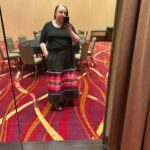 15:05 - 15:25
15:05 - 15:253(C) - Innovative Approaches to Building Impact Assessment Capacity in Omushkego Communities
By Caroline Coburn Odonaterra, Alana Graham (Mishkinakkwe/Turtle Woman) Mushkegowuk Lands & ResourcesMushkegowuk Council responds to the collective will of the Omushkego Nation. Omushkego communities are experiencing development pressures and are involved in impact assessments for the Webequie Supply Road, Marten Falls Community Access Road, and the Northern Road Link, as well as the Regional Assessment for the Ring of Fire. These assessments involve an immense amount of western scientific data and Indigenous knowledge. These assessments are complex and challenging because they are occurring concurrently and within the context of sustained socio-economic inequality, and climate change impacts on community life. To build confidence and capacity in IA, Omushkego communities propose to establish community and external IA expert advisory groups, draft an Impact Assessment Toolkit and Certification Program, and deliver information and training through art and a GeoHUB.Session 3

 15:25 - 15:45
15:25 - 15:45Q & A with Jeremiah, Marian, Michael, Caroline, and Alana
By Marian Tibor-McMahon Independent Researcher & Engagement Specialist, Caroline Coburn Odonaterra, Michael Fox Indigenous Community Engagement, Alana Graham (Mishkinakkwe/Turtle Woman) Mushkegowuk Lands & Resources, Jeremiah Pariag Independent Consultant
 15:45 - 16:05
15:45 - 16:054(A) - Waasigan Transmission Line Comprehensive Environmental Assessment & Indigenous Engagement & Partnerships
By Callum Squires WSP, John Chadwick Hydro OneThe Waasigan Transmission Line, a proposed 360 km line connecting Lakehead Transformer Station (TS) in the Municipality of Shuniah to Mackenzie TS in the Town of Atikokan, and on to Dryden TS in the City of Dryden, is Hydro One’s first comprehensive EA in over 15 years. This presentation will highlight participation opportunities for Indigenous communities, as well as the natural environment field program. Engagement with Indigenous communities was key and there were many lessons learned related to incorporating Indigenous perspectives and how to remove barriers to participation.Session 4 16:05 - 14:25
16:05 - 14:254(B) - The Human Environment in EAs/IAs: Areas Building & Valuing Relationships
By Faiza Waheed IntrinsikThis presentation will shed light on identifying what needs to be assessed (i.e., scoping). This presentation will highlight opportunities and challenges with survey tools and shed thoughts on 1) the questions that should be asked; 2) how we should ask these questions and of whom; 3) when we need to start asking questions; 4) the information we should be prepared to share with communities; and 5) the mindset we should bring to the table.Session 4

 16:25 - 16:40
16:25 - 16:40Q & A with John, Callum, and Faiza
 09:40 - 10:00
09:40 - 10:005(A) - Changes to Federal Impact Assessment
By Terence (Terry) Hubbard Impact Assessment AgencyThis presentation will provide an overview of the amended Impact Assessment Act and the new initiatives announced in Budget 2024 to improve the efficiency of the impact assessment and permitting processes for clean growth projects, including new timeline targets, added transparency through a Federal Permitting Dashboard, and improved coordination of impacts assessments and permitting.Session 5
 10:00 - 10:20
10:00 - 10:205(B) - Update on Ontario’s Environmental Assessment Act
By Peter Brown Ministry of the Environment, Conservation & Parks, Dilek Postacioglu Ministry of the Environment, Conservation & ParksThis presentation will provide an update on the Ontario Ministry of the Environment, Conservation and Parks’ ongoing initiatives to modernize the environmental assessment program in Ontario.Session 5

 10:20 - 10:40
10:20 - 10:40Q & A with Terence, Peter, and Dilek
By Peter Brown Ministry of the Environment, Conservation & Parks, Terence (Terry) Hubbard Impact Assessment Agency, Dilek Postacioglu Ministry of the Environment, Conservation & Parks- 10:40 - 10:55
Break & Networking - Day 2 (1/2)
- Promoting reconciliation is at the core of federal assessments and is demonstrated by the early identification of potential impacts of projects on the Rights of Indigenous Peoples. That said, it is preferable for Indigenous Peoples to lead their own studies. However, respectful and meaningful integration of Indigenous-led impact assessments (ILIA) into proponent-led and government-mandated Environmental Impact Assessments (EIA) remains a challenge. Is there a way of developing a space for ILIAs in the EIA process that does not compromise or water down Indigenous Knowledge (IK)?Session 6

 11:40 - 12:00
11:40 - 12:006(C) - Modernizing While Maintaining Safety: Integrated Assessments for Designated Nuclear Projects
By Kendra Warnock-Juteau Canadian Nuclear Safety, Claire O’Neill Sanger Impact Assessment Agency of CanadaAs new nuclear development proposals emerge to meet electricity demands, requirements of the Impact Assessment Act and the Nuclear Safety and Control Act (NSCA) must be integrated to meet the goal of “one project, one assessment”. The Impact Assessment Agency of Canada (IAAC) and Canadian Nuclear Safety Commission (CNSC) established a Memorandum of Understanding, which outlines roles and responsibilities for the review process. IAAC and the CNSC have been actively working to implement a modernized process that reduces duplication and improves efficiency, while ensuring Indigenous Rights and nuclear safety remain top priorities.Session 6

 12:00 - 12:20
12:00 - 12:20Q & A with Mina, Robert, Claire, and Kendra
By Kendra Warnock-Juteau Canadian Nuclear Safety, Robert Young Hatch, Claire O’Neill Sanger Impact Assessment Agency of Canada, Mina Patel WSP- 12:00 - 13:20
Lunch - Day 2
 13:20 - 13:45
13:20 - 13:45Indigenous Oral History Walk - Post Walk Chat with Gary Pritchard
By Gary Pritchard ~ Giniw (Golden Eagle) 4 Directions of Conservation Consulting Services

 13:45 - 14:15
13:45 - 14:157(A) - Technology & the EA Process - Where to Focus?
By Sabrina Stanlake-Wong Dillon Consulting Limited, Jessica Wright Dillon Consulting, Greg Hayes Dillon Consulting LimitedThe world of technology and AI is evolving at a faster pace than ever before. As an EA Practitioner, it can be challenging to know where to start applying new technologies and what risks to be aware of. This presentation is intended to generate discussion on the use of technology by EA Practitioners and learn from others’ experiences - both the good and the bad.Session 7- 14:15 - 14:30
Break & Networking - Day 2 (2/2)
 14:30 - 14:45
14:30 - 14:457(B) - Open Science & Data Platform: Empowering Canada’s Environmental and Impact Assessment Processes
By Sonja Kosuta NRCan, The Office of the Chief ScientistThe Open Science and Data Platform’s records and functionalities help users utilize information to improve environmental and impact assessment processes, including geospatial data, science, and regulatory information, multi-dimensional baseline and timeseries data, and the ability to layer data in an interactive map viewer to inform cumulative effects at multiple scales. The presentation will highlight how diverse users leverage the Platform to support an efficient and enhanced IA process.Session 7
 14:45 - 15:00
14:45 - 15:007(C) - CNSC Engagement Through Environmental Protection Reviews
By Kendra Warnock-Juteau Canadian Nuclear Safety, Rebecca D’Onofrio Canadian Nuclear Safety CommissionThe Canadian Nuclear Safety Commission’s (CNSC) staff publish environmental protection review (EPR) reports to provide transparency on staff’s evaluation of how effectively nuclear facilities are protecting human health and the environment. CNSC also maintains an Independent Environmental Monitoring Program, regional health studies, monitoring programs, and Indigenous knowledge studies.Session 7
 15:00 - 15:15
15:00 - 15:157(D) - Enhancing Planning Operations & Decision-making through Automation & Data Insights at TRCA
By Beth Williston Toronto & Region Conservation Authority, Mark McKnight Toronto & Region Conservation AuthorityTRCA has launched its new PARES platform as it continues to make significant investments in modernizing its planning and permitting services. TRCA’s new tools are providing better collaboration on files, improved efficiency and more visibility to team activities. This presentation will provide an update on the PARES project and highlight new ways TRCA is continuing to advance it services, including an upcoming public portal for permit applications, enhancements of GIS services for infrastructure reviews, map production automation, and new data analytics services for decision-making.Session 7

 15:15 - 15:30
15:15 - 15:30Q & A with Sabrina, Sonja, Kendra, Rebecca, and Mark
By Sabrina Stanlake-Wong Dillon Consulting Limited, Kendra Warnock-Juteau Canadian Nuclear Safety, Rebecca D’Onofrio Canadian Nuclear Safety Commission, Mark McKnight Toronto & Region Conservation Authority, Sonja Kosuta NRCan, The Office of the Chief Scientist, Kevin Hanna Centre for Environmental Assessment Research, University of British Columbia 18:00 - 20:00
18:00 - 20:006(B) - Lithium Hydroxide Conversion Plant in Quebec: Lessons Learned from a Voluntary EIA Using the Issue-Based Approach
By Robert Young Hatch



